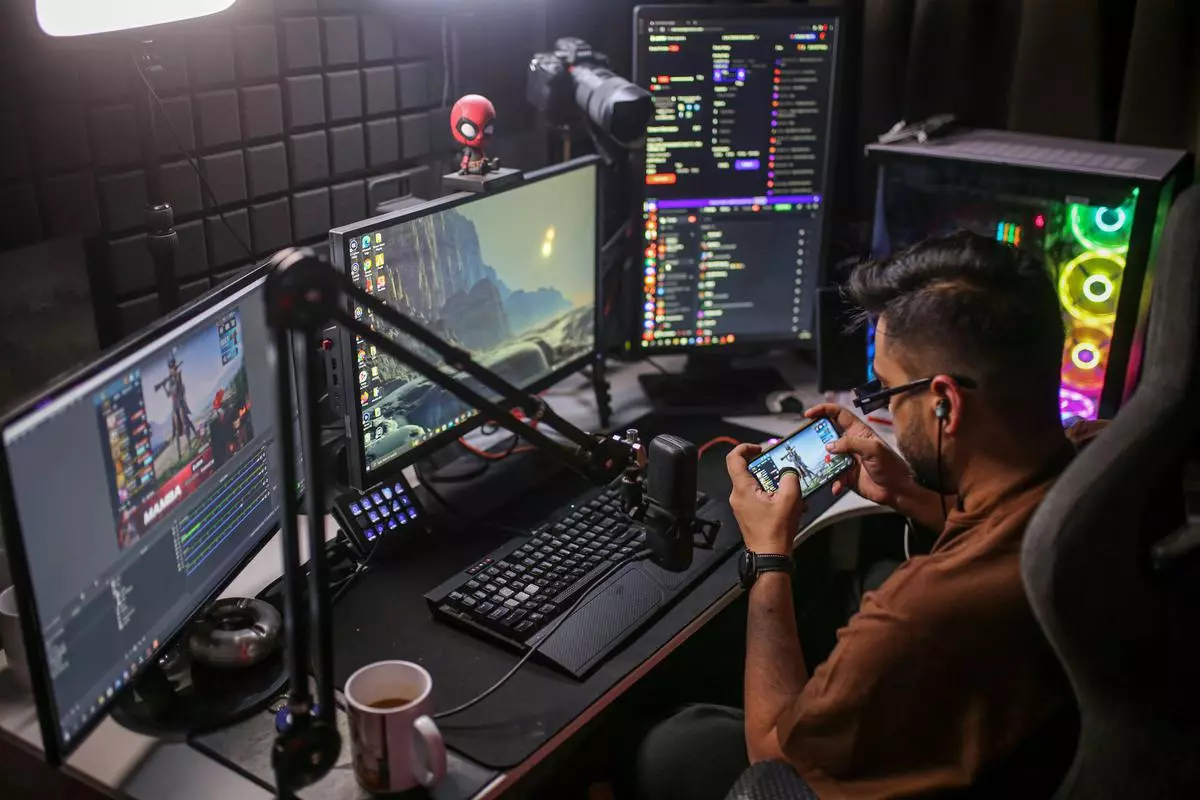Sahil Jakhar, a 23-year-old esports circuit icon known as ‘Soul Omega from Team Soul’, has earned a staggering $47,681 (approximately ₹40 lakh) in the past four years. What was once a pastime is now his main earning source.
Jakhar, who has already taken part in two official tournaments with huge cash prizes, is currently preparing for the third official Battlegrounds Mobile India (BGMI) tournament. These tournaments’ regularity and magnitude have made gaming a feasible career for him, Jakhar states.
Like Jakhar, a large number of young Indians have chosen a career in electronic sports, organized competitive gaming featuring cash prizes for individual players and teams. The Indian government’s acceptance, which has enabled an official Indian team’s involvement in the recently initiated esports section at the 19th Asian Games in Hangzhou (China), is believed to have enhanced these digital competitions’ popularity, attracting a sizable fan base in a country where gaming has often been negatively correlated with gambling.
The government’s acknowledgment of esports has been crucial in dispelling the sector’s stereotypes and promoting its growth, states Lokesh Suji, Director of Esports Federation of India and Vice-President of Asian Esports Federation.
As part of the 15-member Indian group at the Asian Games, the League of Legends team performed commendably to finish fifth.
Building a fan base
Game streaming, especially on YouTube, Discord, and Twitch, has helped increase followers along with endorsements by celebrities and televised matches on major platforms such as Star Sports and JioCinema.
Average peak viewership for competitive esports in India has skyrocketed to two million in 2022, rising from 0.6 million in 2020, mentions Tanushree Basu Roy, Statista’s Researcher in India. She foresees the viewership of esports to keep climbing in the foreseeable future.
Statista’s report predicts a viewership of three million and a $3.1 billion valuation for the Indian esports segment. Lumikai, an investment fund focusing on India’s gaming space, expects the segment’s value to reach $7.5 billion by fiscal year 2028.
India is pegged as Asia’s fastest-growing market for video games that’s anticipated to reach 444 million gamers by 2023 end, as per the ‘India Games Market 2023’ report by Niko Partners. Interestingly, 71.8 percent of these gamers have engaged with esports, it mentions.
Factors such as a youthful population, expanded access to fast and dependable internet, and affordability of gaming-friendly smartphones are stimulating esports’ sensational growth in India, enumerates Suji, the esports federation chief.
Significance to brands
India’s mobile-centric gaming ecosystem is becoming an investment magnet, states Animesh Agarwal, Founder, and CEO of esports consultancy and talent agency 8Bit Creatives and S8UL. Thanks to high internet reach and a rise in gaming content creators, there’s been an upswing in the number of gamers, viewers, and tournaments. This dynamic demographic composed largely of young tech-savvy individuals has started to appeal to brands seeking to connect with a vast, influential consumer group, Agarwal adds.
Akshat Rathee, MD of Nodwin Gaming, a Nazara Technologies subsidiary, believes that despite the ban on Chinese apps and betting games, esports has grown in India. The soaring esports viewership and influencer economy are creating a robust brand recall.
Brands and marketers are noticing the marketing potential inherent in esports tournaments.
International games such as Valorant, Free Fire, Dota, COD, Clash Royale, and FIFA are becoming well-known in India, specifically among the younger population, says Manesh Swamy, Chief Creative Officer of digital marketing company LS digital.
Monetary benefits
The sizeable prize pool is a significant factor. For example, the Nodwin Gaming’s BGMI Masters Series 2 offers a prize pool of ₹2.1 crore; Kingfisher India Premiership gives a ₹1 crore prize; and Valorant Challengers South Asia, ₹1.16 crore.
As per a report by HP, Indian gamers typically earn ₹6-12 lakh annually. The rewarding returns are encouraging more youngsters to become professional gamers, Swamy states. Nearly 52 percent of active gamers now view it as their chief career, a rise from 33 percent a year ago, according to HP’s ‘Gaming Landscape Study’.
Esports tournaments not only provide a vital platform for players but also help India gain international recognition in line with other leading markets. Sponsorships and partnerships result in larger prize money and reach, with opportunities for higher foreign investment, states Statista’s Roy.
However, the growth does come with its solutions. The uncertain status of real-money games has created confusion for digital platforms that run esports tournaments. The ban on popular Chinese gaming platforms like PUBG has left gamers searching for substitutes. Agarwal also highlights the underdeveloped infrastructure for PC and console gaming and the high price of gaming equipment as major hindrances in India, considering that international tournaments such as the Asian Games include both PC and console platforms.
Agarwal sums up, stating that the lack of an evolution roadmap for talent, alongside the creation of competitive platforms and related infrastructure, hinders India’s gaming ecosystem’s long-term progress. Addressing these concerns is crucial to ensure our athletes gain global recognition.
